Unbecoming Female Monsters
Latin American Gender and Sexualities
Series Editor : Carolina Rocha, Southern Illinois University Edwardsville
The Latin American Gender and Sexualities series is a timely addition to current scholarship on gender and sexuality. In the last decade, a number of Latin American governments are showing openness to new kinds of sexualities through public policy. The study of gender and sexuality also developed during that time to examine questions of power, nationalism, and changing identities within the social fabric of Latin American countries. Because of its appeal ranging from gender and feminist studies to queer theory, this series is a vibrant component of Latin American studies looking at the intersection of gender and culture. Works include book-length studies and essay collections that combine the methodologies and insights of cultural studies and literature with those of history, anthropology, and other social sciences.
Titles in the Series
Negotiating Gendered Discourses: Michelle Bachelet and Cristina Fernndez de Kirchner , by Jane L. Christie
Resistant Bodies in the Cultural Productions of Transnational Hispanic Caribbean Women , by Irune del Rio Gabiola
Unbecoming Female Monsters: Witches, Vampires, and Virgins , by Cristina Santos
Unbecoming Female Monsters
Witches, Vampires, and Virgins
Cristina Santos
Lexington BOOKS
Lanham Boulder New York London
Published by Lexington Books
An imprint of The Rowman & Littlefield Publishing Group, Inc.
4501 Forbes Boulevard, Suite 200, Lanham, Maryland 20706
www.rowman.com
Unit A, Whitacre Mews, 2634 Stannary Street, London SE11 4AB
Copyright 2017 by Lexington Books
All rights reserved . No part of this book may be reproduced in any form or by any electronic or mechanical means, including information storage and retrieval systems, without written permission from the publisher, except by a reviewer who may quote passages in a review.
British Library Cataloguing in Publication Information Available
Library of Congress Cataloguing-in-Publication Data Available
ISBN 978-1-4985-2963-1 (cloth : alk. paper)
ISBN 978-1-4985-2964-8 (electronic)
 The paper used in this publication meets the minimum requirements of American National Standard for Information SciencesPermanence of Paper for Printed Library Materials, ANSI/NISO Z39.48-1992.
The paper used in this publication meets the minimum requirements of American National Standard for Information SciencesPermanence of Paper for Printed Library Materials, ANSI/NISO Z39.48-1992.
Printed in the United States of America
For Carmen
And our shared predilection for monstrous women
Contents
First and foremost, I need to thank my husband Martin and my sons, Joseph and Lucas. The boys in my life that have supported this project by always encouraging me to keep writing; understanding when I had to be away at conferences and most of all, finding it cool that mommy did research on monsters.
The inspiration for this work departs not only from a predilection for vampires and other monsters but also the generosity and encouragement from Carmen Boullosa. After all, it was my first reading of her La milagrosa [ The Miracle Worker ] that led me down this path of unbecoming, yet powerful, female monsters. Gracias Carmen.
Parts of this work have evolved from conference papers and presentations. The feedback received from fellow scholars at these events was helpful in developing my ideas into the project presented here. But most of all I would like to thank Adriana, Tracy and Jonathan for reading this manuscript at its various developing stages and giving me not only their comments and suggestions but encouraging me to get it done.
Thank you also to Nicolette Amstutz and James Hamill at Lexington Books for their assistance throughout the publication process.
Epigraphs
Chapter 1 : From WOMAN HOLLERING CREEK. Copyright 1991 by Sandra Cisneros. Published by Vintage Books, a division of Penguin Random House, and originally in hardcover by Random House. By permission of Susan Bergholz Literary Services, New York, NY and Lamy, NM. All rights reserved.
Chapter 3 : Lanyon, Anna. Malinches Conquest . Crows Nest (Australia): Allen & Unwin, 1999. Reproduced with permission of Allen & Unwin Pty Ltd. http://www.allenandunwin.com.
Chapter 4 : Excerpt from Womans Inhumanity to Woman by Phyllis Chesler, reproduced with permission of the author.
Chapter 5 : Excerpt(s) from THE SECOND SEX by Simone de Beauvoir and translated by Constance Borde and Sheila Malovany-Chevallier, translation copyright 2009 by Constance Borde and Sheila Malovany-Chevallier. Used by permission of Alfred A. Knopf, an imprint of the Knopf Doubleday Publishing Group, a division of Penguin Random House LLC. All rights reserved.
Artwork
Cover art : Mother of War reproduced with permission of the artist, Spade of Citizen Kane.
Image I.1 : Goya y Lucientes, Francisco de (17461828). Capricho no. 45: There Is Plenty to Suck (Mucho hay que chupar). Etching and burnished aquatint. Biblioteca Nacional, Madrid, Spain. Photo Credit: Album I Art Resource, NY.
Image I.2 : Goya y Lucientes, Francisco de (17461828). Capricho no. 68: Pretty Teacher! (Linda maestra!). Etching, aquatint and drypoint. Biblioteca Nacional, Madrid, Spain. Photo Credit: Album/Art Resource, NY.
Image 1.1 : Chains that Bind , reproduced with permission of the artist, Cristina Santos, 2009 .
Images 3.1 and 3.2 : La Llorona in Liliths Garden & Close Up , Delilah Montoya with Tina Hernandez, 2004. Reproduced with permission of the artist, Delilah Montoya.
Image 3.3 : Coatlicue . Aztec Culture. Museo Nacional de Antropologa e Historia, Mexico City, Mexico. Photo Credit: Album/Art Resource, NY.
Image 3.4 : Mother of War , reproduced with permission of the artist, Spade of Citizen Kane.
Image 3.5 : Dismemberment of Coyolxauhqui the moon goddess , large circular monolith, stone, Late Post-Classical Period Aztec (13251521) (3m diameter) (killed every month by the Sun, shown here with decapitated head and dismembered body), Museo del Templo Mayor Mxico. Photo Credit: Gianni Dagli Orti/The Art Archive at Art Resource, NY.
Image 3.6 : Torres, Antonio de (16671731). Virgin of Guadalupe ( Virgen de Guadalupe ), circa 1720. Oil on canvas, 81 1/2 x 55 1/8 x I 3/16 in. (207 x 140 x 3 cm); Frame: 89 x 62 1/2 x 2 1/2 in. (226.06 x 158.75 x 6.35 cm). Gift of Kelvin Davis through the 2014 Collectors Committee (M.2014.91). Los Angeles County Museum of Art Digital Image [2016] Museum Associates I LACMA. Licensed by Art Resource, NY.
Image 4.1 : Mirror, Mirror, reproduced with permission of the artist, Spade of Citizen Kane.
Image 5.1 : La condesa sangrienta , reproduced with permission of the artist Santiago Caruso.
Image 5.2 : Iron maiden ( torture device for the witches ). Germany, XVIIIth cent. Photo Credit : CCI/The Art Archive at Art Resource, NY.
of self. This affiliation to the larger communal body requires, intrinsically, that woman sacrifice an innate sense of self or part of self to concede to the dominant normative discourse. What happens to women when they are not willing to compromise their authenticity and uniqueness in order to affiliate themselves with this collectivized gender-based uniformity and sociocultural organization that demands from woman a subjugation of not only the self but also of individual power and agency? What happens when woman does not perform for the comfort level of those around her but rather for own authenticity?
Unbecoming Female Monsters is looking at the cult of the female body and the patrilineal and patriarchal anxieties around its reproductive malleability and sexual power. By cult I refer to a system of sociocultural values and customs that, within the patriarchal construct, define women within a protocol that places female beauty as the object of the male gaze and, as Nancy Etcoff states, open to cultural consumption (4). Etcoff not only stipulates that it is influenced by cultural taste but that the object of beauty is, essentially, an unobtainable ideal for a human to achieve (11, 21). Furthermore, it is affected by a 3 body problem: (1) we possess what we live in; (2) it is a public faade; and (3) the dissected body is both physical and emotional (14). As such, the chapters in this book reflect the varying stages of the female body as it changes and develops from girlhood to womanhood as both a physical and psycho-emotional maturation and development toward self. Noting that any process of female sexual development occurring outside the dominant phallocentric discourse of the cult of the female body is considered deviant, monstrous, degenerate and leading to female categorization (virgin, whore, mother, etc.) by external forces and possible exclusion and punishment for not adhering to the normative code.
Next page
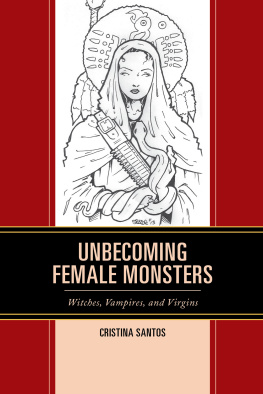

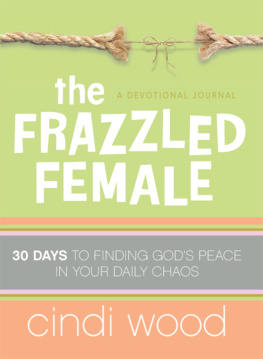
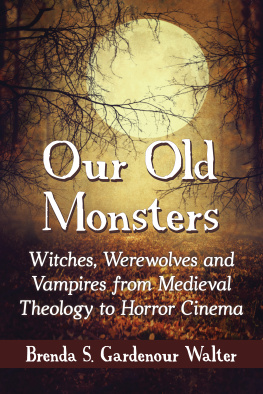
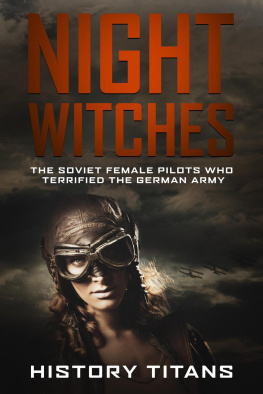
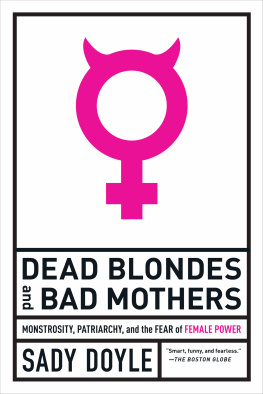
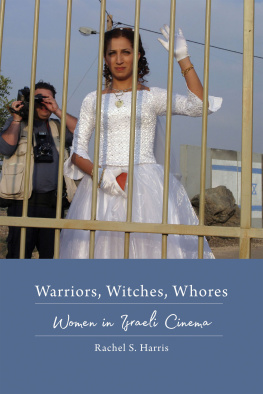
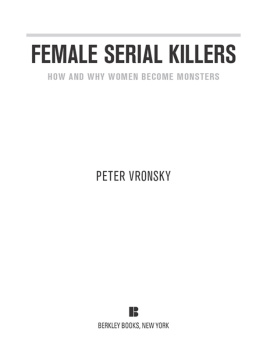
 The paper used in this publication meets the minimum requirements of American National Standard for Information SciencesPermanence of Paper for Printed Library Materials, ANSI/NISO Z39.48-1992.
The paper used in this publication meets the minimum requirements of American National Standard for Information SciencesPermanence of Paper for Printed Library Materials, ANSI/NISO Z39.48-1992.